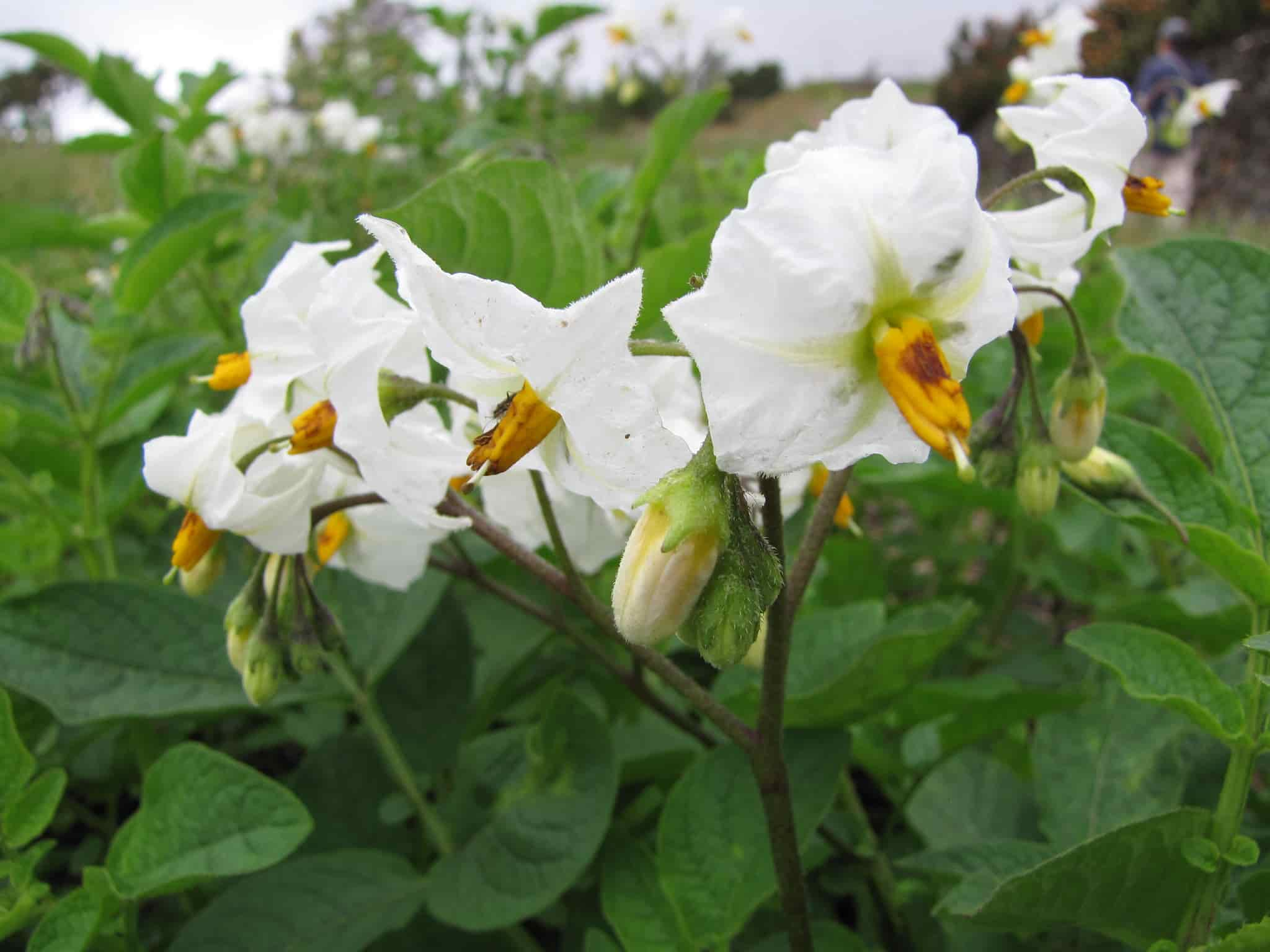
Diseases and pests of potatoes
What are the main pests of the potato? How to recognise, treat, and prevent them?
Contents
Ah, the potatoes! Just the name makes your mouth water. Chips, gratin, mash, shepherd’s pie, jacket potatoes… There isn’t a region in France that doesn’t have its own potato-based specialty: aligot from Aubrac, baeckoffe from Alsace, patia from Haut-Forez, Savoy tartiflette, or Stéphanoise grated potatoes. There are so many ways to enjoy them that it’s hard to do without them in the vegetable garden. Moreover, growing potatoes is relatively easy to manage. Whether considered a vegetable, a starch, or a tubercle, this plant from the Solanaceae family (like tomato, aubergine, or pepper) is not particularly demanding except that it prefers rich, deep soils, regular hilling, and some watering during dry spells. However, like all solanaceae, potatoes can be susceptible to diseases, viruses, and pests. Let’s learn to recognise them so we can treat them naturally and, most importantly, prevent them.
The enemies of the potato
Qu they fly, crawl, or evolve underground or in the air, whether they suck, devour, or sting plants, insects are numerous in making potatoes their dish of choice. Whether they attack leaves, stems, shoots, or tubers, they are everywhere, ready to draw their weapon of war to poison your life. And when it comes to potatoes, one cannot overlook the Colorado potato beetle, even if other enemies lurk insidiously to devour your young plants.
The Colorado Potato Beetle
Description
Easily recognisable, the Colorado potato beetle has an oval and bulging body. Each of its elytra is marked with five black stripes on a yellow background. The larvae are reddish-orange. Both larvae and adults measure between 1 and 1.5 cm.
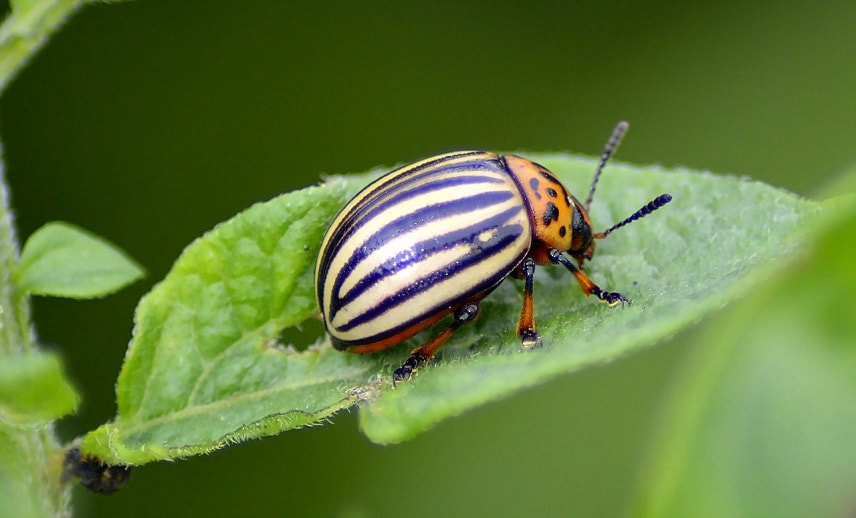 Colorado potato beetles can cause serious damage
Colorado potato beetles can cause serious damage
The Colorado potato beetles spend the winter in the soil at a depth of 25 to 50 cm. When temperatures reach around 15 °C, they emerge and rush towards the young potato leaves. Sated, they lay eggs on the undersides of leaves that have escaped their appetite. And as soon as the larvae hatch, they continue their destructive work, jeopardising an entire crop. Then the larvae become adults and burrow into the soil to emerge again the following spring.
Symptoms
The first symptoms are holes in the leaves. Next, adults and larvae consume the entire leaf starting from the edge. Young adults also feast on the tubers.
Prevention
- Implement a crop rotation of at least three years.
- Remove all potato regrowth that appears in spring.
- Make every effort to welcome the predators of Colorado potato beetles, such as blackbirds, lizards, small mammals, and ladybirds that feed on the eggs.
- Sow a flower meadow made up of repellent annual flowers for Colorado potato beetles.
Natural Treatments
- By carefully observing the undersides of leaves, one can detect small yellow eggs grouped in tight clusters that need to be removed.
- Hand-picking adult Colorado potato beetles and larvae.
- At harvest time, stems and potato remnants should be destroyed.
- Spray nematodes against Colorado potato beetles.
Wireworms
Description
In fact, it is the larva of the wireworm, a small beetle of the genus Agriote, that one should fear. Slim, cylindrical, shiny yellow with a dark brown head, it is referred to as the “wireworm”. It appears from May to late August after living several years in the soil where it was born. It prefers moist soils.
Symptoms
The wireworm larva penetrates the potatoes, feeding on them, which leads to the wilting of the plant.
Prevention
- Strictly apply crop rotation.
- Thoroughly work and loosen the soil before planting potatoes.
- Add manure and compost in autumn.
- As wireworm larvae often develop in freshly turned soil, let the chickens out if you have any.
- Attract the natural enemies of wireworms, such as ground beetles, shrews, and birds.
- Apply lime, especially in acidic soils.
- Spray a fern manure that seems to be repellent.
- Sow castor or flax seeds that effectively repel Colorado potato beetles.
Natural Treatments
- As soon as you plant your potatoes, create baits with other potatoes cut in half. Bury the cut side 4 to 5 cm deep. Check your traps every two days. The wireworm traps are also very effective.
Potato Cyst Nematode
Description
Nematodes are small pale yellow or white microscopic worms capable of living many years in the soil where they were born. Females attach to the roots to lay eggs. Those that attack potatoes belong to the genus Globodera. They do not move, but the cysts can be spread by tools or shoes.
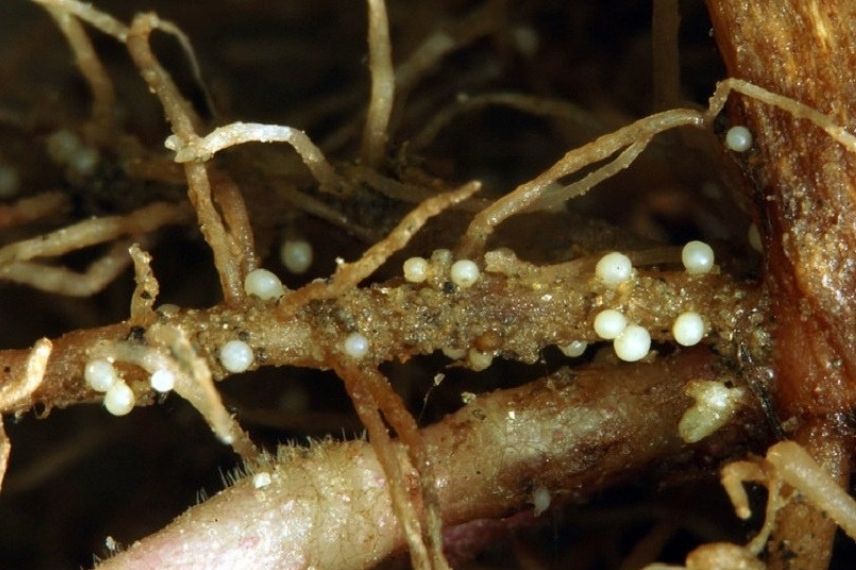 Attack of cyst nematodes on the root system of potatoes
Attack of cyst nematodes on the root system of potatoes
Symptoms
The root system is attacked, and the plants become stunted, yellow, and wilted. Tissues are damaged by cysts, and potatoes may be dotted with fine cracks.
Prevention
- Crop rotation is essential.
- Avoid excess nitrogen.
- Incorporate a little powdered clay into the soil in autumn.
- Burn plants affected by nematodes.
- Carefully clean your tools.
- Plant marigolds, garlic, or onions between potato rows.
Natural Treatments
There is no effective treatment against nematodes.
Slugs
Description
There are slugs of various sizes and colours. Hermaphrodites, they fertilise each other and reproduce mainly in wet weather and in the absence of predators. They live only 9 to 12 months and are active from April to August.
Symptoms
The skin of the tubers is pierced. Slugs burrow into them and feed on the flesh. There is also noticeable defoliation of plants and trails of mucus.
Prevention
- Set up insect shelters, feeders, or wood piles to attract slug enemies such as hedgehogs, ground beetles, birds, and shrews.
- Monitor compost and remove any slugs that may be hiding there.
- Water only in the morning.
- Cover the soil with pine needles or crushed ferns.
- Place copper nets or bands or slug barriers, which are very effective in preventing gastropods from passing.
Natural Treatments
- Hand-picking slugs early in the morning.
- Place cardboard, tiles, or boards around the garden. Slugs take refuge there, and in the morning, simply collect them to take them far away.
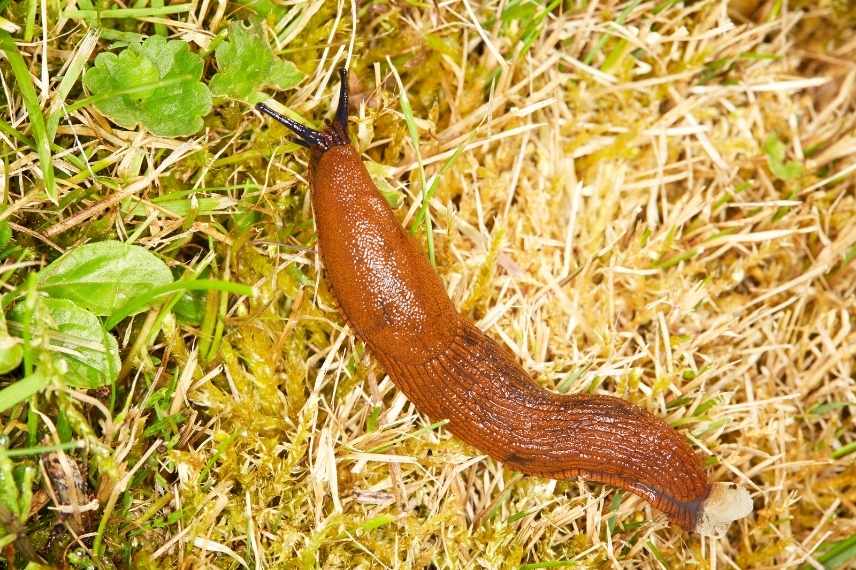
Aphids
Description
Four types of aphids are most commonly found on potatoes: Aphis nasturtii, Myzus persicae, Macrosiphum euphorbiae, Aulacorthum solani depending on the climate. They are not dangerous in themselves to potatoes but are mainly vectors of various viruses.
Symptoms
Leaves turn light in colour, become crinkled, and die.
Prevention
The best preventive solution is to attract predators such as hoverflies, lacewings, and ladybirds by planting flowering plants.
Natural Treatments
- Spray a solution made from black soap.
- Spray nettle manure.
Read also
Potatoes: planting, growing, harvestViral diseases of potato
Essentially transmitted by aphids or, from generation to generation, by tubercles, viruses affect potato crops to varying degrees. There are many types:
- Leaf curl virus is transmitted by the peach aphid (Myzus persicae) and is characterised by leaf curling, chlorosis of the leaves, and the appearance of necrotic spots.
- Mosaic: small yellow spots appear on the lamina of the leaves, forming patterns reminiscent of Aucuba japonica. Sometimes, spots develop on the tubercles.
- Marbling virus is transmitted by beetles. It is recognised by the marbling that appears on the leaves.
- Frizzled: the leaves become crinkled and rough.
- Variegation: necrotic brown spots develop on the older leaves of adult plants.
Prevention
- Control the virus vector, often aphids.
- Carefully clean your tools.
Natural treatments
Remove and burn all diseased parts of the potato.
Discover other Seed potatoes
View all →Available in 0 sizes
Available in 1 sizes
Available in 0 sizes
Available in 2 sizes
Available in 1 sizes
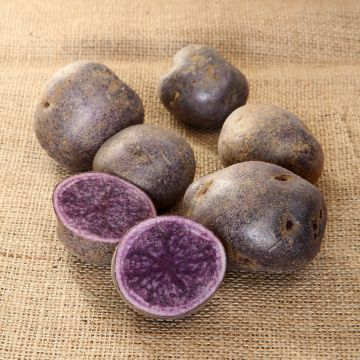
Available in 1 sizes
Available in 3 sizes
Available in 1 sizes
Available in 1 sizes
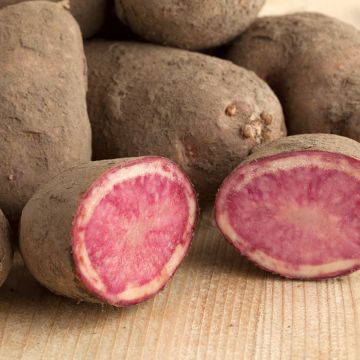
Available in 1 sizes
Fungal diseases of potato
Provoke by fungi, several cryptogamic diseases can affect the potato. Foremost among them is the formidable late blight. This disease was, in fact, responsible for the severe famine that affected Ireland in the mid-19th century.
Late Blight
Description
The fungus Phytophthora infestans is responsible for this disease. It requires humidity and mild temperatures ranging from 10 to 25 °C to develop. Successive thunderstorms and fogs promote its evolution.
Symptoms
From May onwards, brown spots with a slightly oily appearance appear on the aerial parts of potato plants, on both the upper and lower surfaces. A white fluff is often also visible.
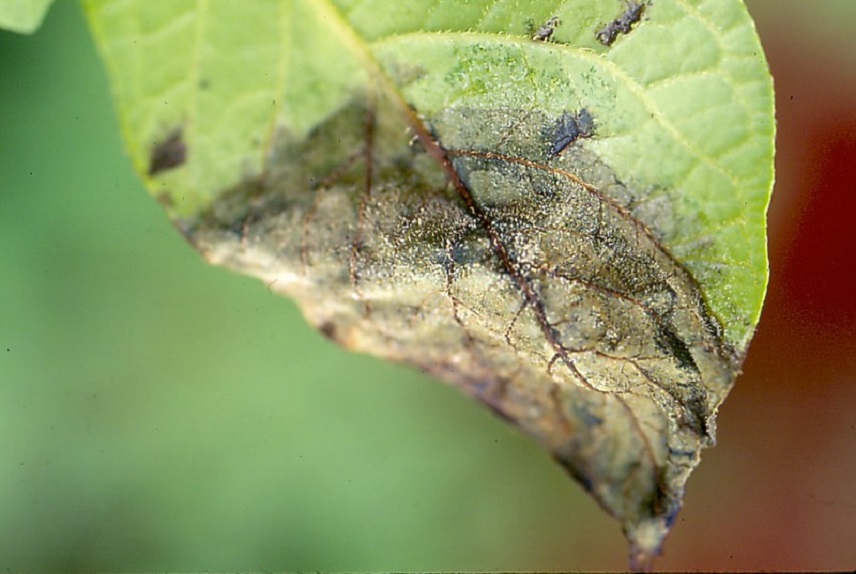
The characteristic dark brown spots of late blight
Prevention
- Choose varieties that are naturally less susceptible to late blight, such as Mona Lisa, Charlotte, and Désirée.
- Avoid watering the foliage.
- Do not plant tubers too closely together to aerate the plot.
- Weed and hoe regularly.
- Implement crop rotation.
- Spray with Bordeaux mixture or a horsetail decoction.
Natural Treatments
- Remove and burn infested parts of the potatoes.
Black or Brown Scab
Description
The fungus Rhizoctonia solani is responsible for this disease, which infects the sprouts and roots of potatoes in spring. It develops in cold, damp conditions at the start of the growing season.
Symptoms
Dark brown spots form, and the stems die. The plants develop poorly. After hilling, the leaves curl and lighten. In humid weather, a whitish sheath may appear at the base of the stems. Crusts form on the tubers.
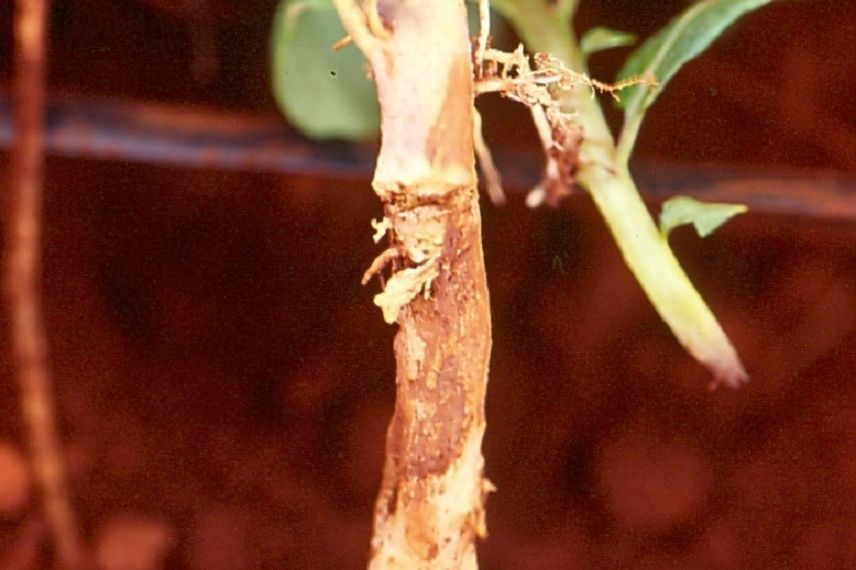
A potato root affected by black scab
Prevention
- Do not plant too early or too deeply; wait until the soil is well warmed.
- Implement crop rotation every 3 years.
- Avoid leaving tubers in the ground for too long.
Natural Treatments
No specific treatment is required. Simply destroy infested plants.
Common Scab
Description
The fungus Streptomyces scabies is present in most soils but thrives particularly in sandy or overly calcareous soils when temperatures are between 15 and 24 °C.
Symptoms
Brown, cracked, flat, hollow, or raised spots appear on the tubers. Potatoes do not store well.
Prevention
- Choose less susceptible varieties such as ‘Apollo, Sirtema, Roseval, Béa, Ratte, Rosa…
- Sow green manures such as vetch, lupin, rye, or mustard before planting potatoes. These green manures have an inhibiting effect.
- In case of drought, water at the beginning of tuber formation.
- Maintain a 4-year interval between two crops.
Natural Treatments
No natural treatments available.
→ Learn more about common scab of potatoes in our advice sheet!
Alternaria
Description
Also known as brown spot disease, Alternaria is caused by two fungi, Alternaria solani and Alternaria alternata that attack the leaves of potatoes. They thrive in humid conditions.
Symptoms
Brown then black spots appear on the upper surface of the leaves. They form concentric circles. The leaves dry out or rot. A dry rot appears on the tubers during storage.
Prevention
- Implement crop rotation.
- Avoid planting too densely.
- Water without excess.
Natural Treatments
Bordeaux mixture can be sprayed as soon as the disease appears.
- Subscribe!
- Contents
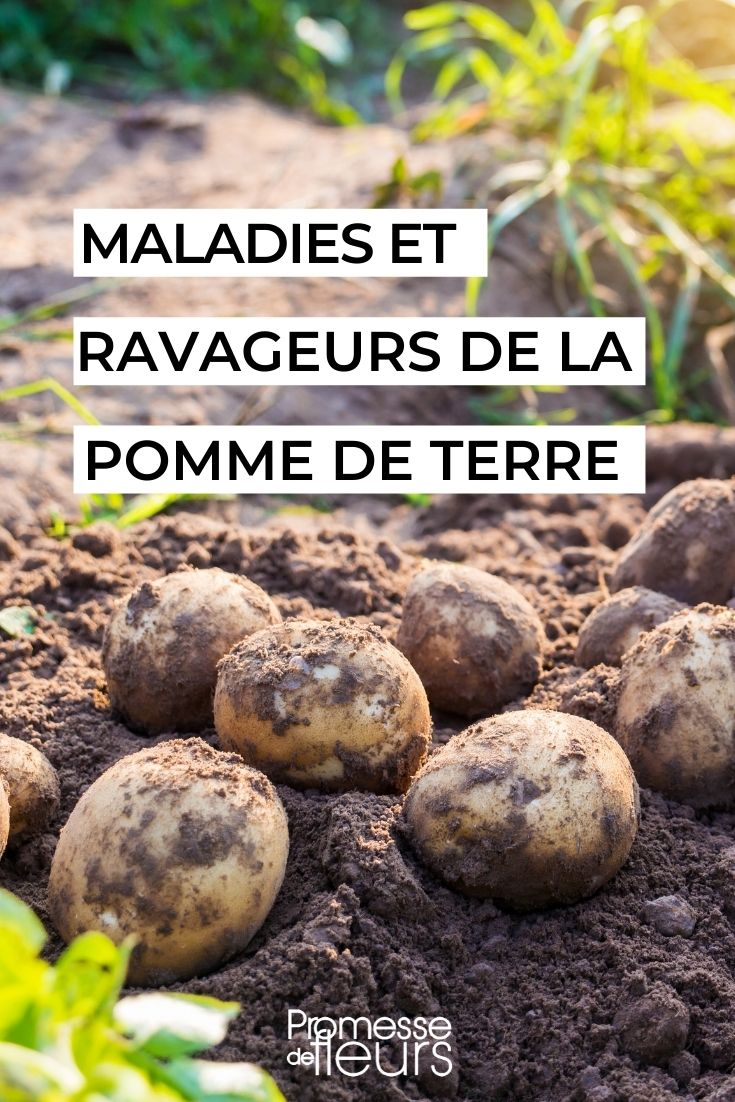































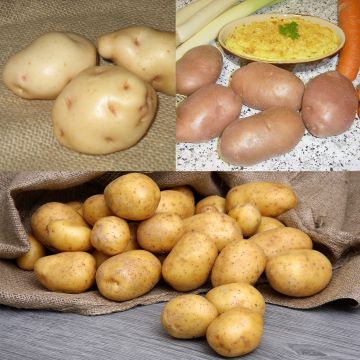
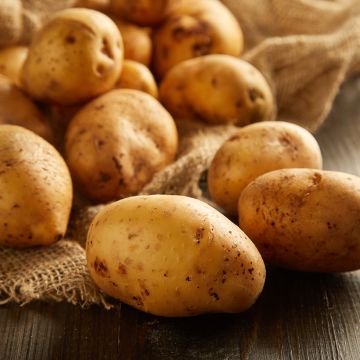
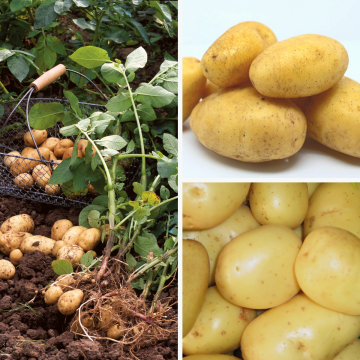
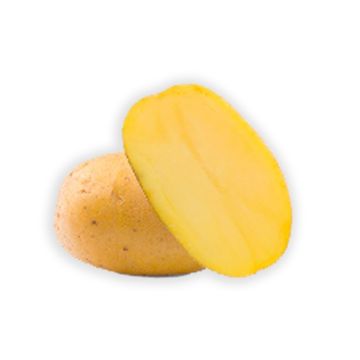
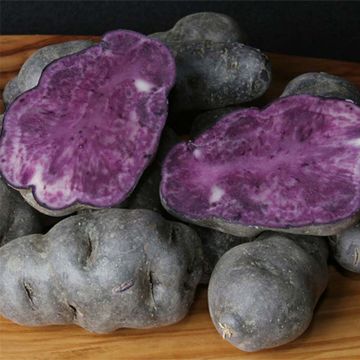
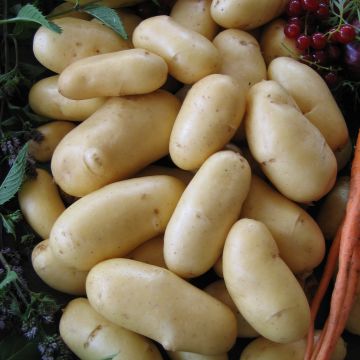
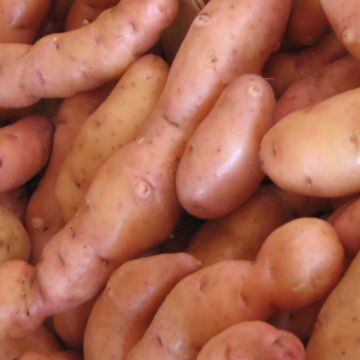

Comments